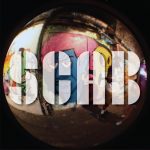
Animated Portraits
It might only have been the first week of term but nevertheless, we hit the ground running. Days two and three gave us masterclasses in how to make animated and still portraits (or GIFs and JPGs, to you and me) and set us up with briefs which had to be fulfilled and presented at the end of the afternoon. Here’s Richard giving you the low down on how we got on with the first brief, GIFs.
We see GIFs everyday. Most take the form of a well known clip from a movie, but in constructing our own, the goal was to create a seamless clip with no beginning or end – the ideal way to keep an audience watching our work for longer.
The brief: 1) create a moving portrait that tells something important about our partner; 2) make it memorable; 3) it must repeat every 4 seconds; and 4) with no audio
We were encouraged to consider:
- Lighting
- Framing
- Foreground
- Background
- Style effects (but only if it helps you say something)
After a very open conversation with Matilde about her past, I began iterating ideas. The subject matter I chose for my GIF was repetitive behaviour, and I wanted to delve into the emotional reasons behind the action – it was time for my new layer skills to come to the fore…!
The project had a short turnaround, so I settled on a symmetrical range of movements that could be told in a minimum* of 6 frames – 2 of which could be mirrored, and 2 of which were nearly identical (*this method would allow me to create a functional GIF, and then if I finished in time, I could go back and add additional frames to create smoother transitions). After settling on my idea, I drew out my storyboard layer by layer:

I then set about constructing the whole range of the left hand movements, before mirroring the sequence. I had to add a couple of additional frames to complete the story, but I was really pleased with the result.
The portrait consisted of 5 separate layers working in tandem (including two moving backgrounds), giving the illusion of a dancing Matilde putting out fires:


The false-deadline gave us overnight to finesse our images. I went back and added filters to the background layer of Matilde, and changed the shape of the flames to show more movement. There’s always things to improve on, and we both wished we had more time – Alex was working right up to the wire. Here’s her take, including the low down on the presentation and feedback aspect of the brief:
Having only a few hours to fulfil the brief meant that the heat was on – especially for novice Photoshoppers like me. Ian’s masterclass covered the basics of Photoshop, and how to actually create the GIF, but I found that with only a basic knowledge of what the software is capable of, I had to really think about what I wanted to achieve in order to not waste time learning irrelevant information. Key takeaway – have a good idea of what you’re trying to achieve before you even start collecting material, it will make your life a lot easier.
Whilst it was still a steep learning curve, it felt nice to have something to really get my teeth into. I had so much anxiety around not being able to meet the deadline simply because I had so much to learn and wouldn’t be able to create something ‘good’ within the time, tied in with being a remote student, I was worried that I wouldn’t be able to access any help if I needed it – but I soon found that that wasn’t the case. Too many of us get tied up in our own heads, we forget that that the first idea is often the best.
With minutes to spare, I got my work submitted. Another thing I am coming to learn is that every minute counts when you’re working on a brief.
Then comes the fun bit – seeing what everyone has created. Going through each GIF in turn, Rob asked us to say what we thought each person was trying to convey about their subject, before then asking the creator. At first, I found it nerve wracking to present what I’ve created, but the excitement to see what everyone else has produced, totally overshadows that. In the end, it’s really interesting to see how different people interpret the brief, and the different formats they chose to work in. That in itself provides so much learning – it’s unreal.




It was also interesting to hear the different interpretations people had of each other’s work compared to what the creator was trying to convey – some were spot on, others not so much, and sometimes the suggestions were things the creator hadn’t even considered!
What do you think each of the above GIFs say about its subject?! Is Richard a potato? Is Hannah the epitome of calm in a chaotic world? Is Rose a free elf? Is Emily more adventurous (and kinky) than most of us would dare be?!
Tweet @sca2_0 with your thoughts!
Overall this was a fun brief and a great way to get to know each other. Our top takeaways were:
- Have an idea of what you want to achieve BEFORE you start taking images, then…
- …Take lots of pictures, way more than you think you need, with a full range of motion and both sides
- Know what you want to ask for help with, and THEN tap up a mentor!
- Keep your files in order – name them logically or you’ll have a hard time finding them in a hurry when you need them, and lastly…
- KISS Rob: “Keep It Simple Stupid” – I can confirm this works, he loves it xxx











